Lost in Translation PT II
July 8, 2025
Let me just start by saying – these blogs are not always my favorite to write (re: not great at sitting still). So I am GENUINELY SHOCKED I would ever need to split a blog into 2 parts because I just had so much to yap about but here we are. Welcome back!
Kyoto was next. The former capital, Kyoto is often regarded as a crossroads between modern and traditional Japan. It was also my favorite stop. Contrary to Osaka, Kyoto is full of tranquil moments tucked into the city’s fabric – narrow streams breaking up pedestrian only blocks, pockets of green space, grandiose temples hidden behind gates in the middle of busy neighborhoods. In Kyoto there are windows into the past everywhere you look. You can explore neighborhoods where geisha culture is alive and well. If you’re lucky you can catch a rare glimpse of them during their commute – it’s a small window and requires a bit of loitering. Visitors dress in traditional kimonos, with the braver lot daring to rock the strong fashion choice of socks platform wood sandals.
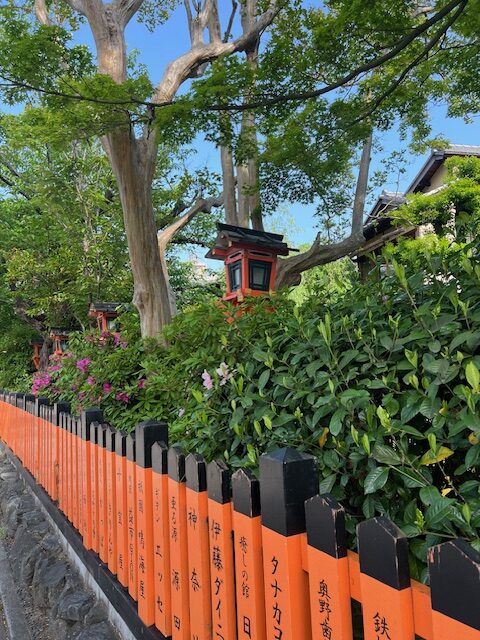
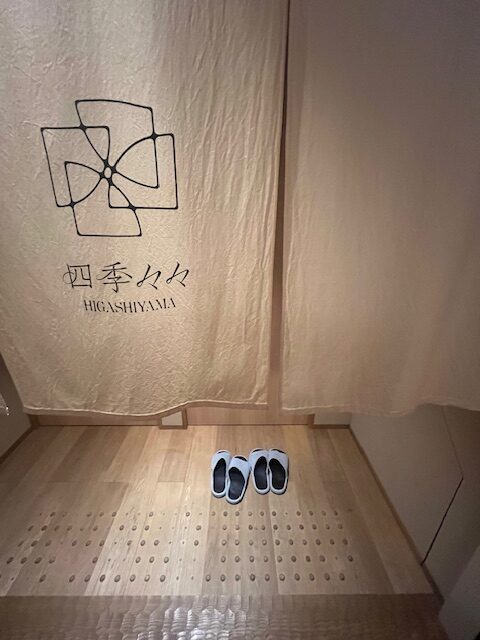
I discovered the other half of Kyoto’s identity in it’s culinary scene. The city is a major hub for sake brewing which has led to a unique bar scene. Granted listening bars are also popular in the country, we found a number of bars that mixed the concepts. Every space was thoughtfully curated. Some had the same hole in the wall atmosphere as Osaka’s eateries but with elevated, quietly sophisticated but cool design. Bar owner’s often only carrying a handful of sake options at a time to minister a rotation of experiences. The aesthetic is often clean lines, classic wood tones, moody lighting and understated yet chic details in art and form for that effortlessly cool aura. I enjoyed these spaces (and the sake) so much I found myself buying skateboard bar art with very little persuasion. In fact, my new piece just might be my favorite travel art yet.
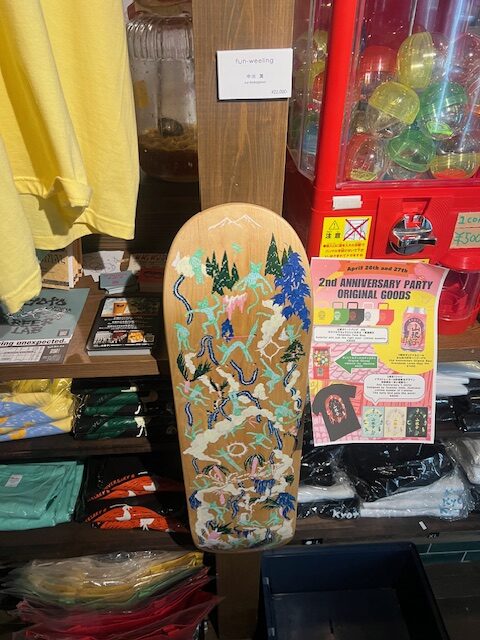
Tokyo was our final stop. The city is absolutely massive yet so well connected and organized. Everything feels ahead of it’s time – from the architecture, to the efficiency and even the sounds (think lots cute robot-like beeping sounds). So much of Japan’s culture is based on the idea of the group. I noticed it everywhere we went. For example, in the subways small arrow markers divide foot traffic going up and down stairs at every level change. The most shocking part – people actually listened. Good luck getting American’s to cooperate on that level. Restaurants with standing-only counter service create a group setting rather than individual bistro tables separating small groups. It translates to more conversation and interaction with your neighbors, as well as efficiency not to take up valuable space longer than needed. In Rebecca and mines case, this led to inquiring about what mysterious seafood our fellow sushi counter patrons were sampling. It was raw squid and it was actually delicious (I want 5 more).
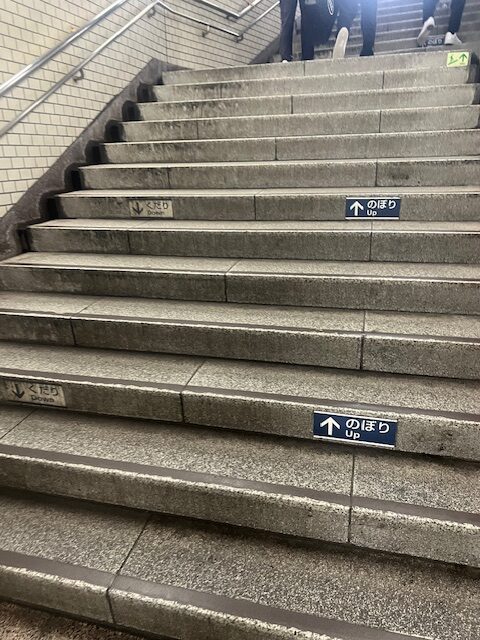
Architecture wise Tokyo was as design-forward and innovative as you would imagine. While some opt for a traditional ryokan experience, I had my heart set on trying out a pod hotel. Now I’m no stranger to efficient accommodations as I’ve stayed in my share of hostels, but the pod hotel was a whole new, slightly perplexing, experience. The one we chose to stay at also doubled as a “sleep lab”. We were not mentally prepared for what that came with. From the outside, our pods were futuristic sleek bunks thoughtfully organized in a minimalist glass and concrete structure. From the inside, it was more of a Squid Games dormitory situation. There was no speaking throughout the hotel, very tight storage accommodations, cameras in our pods to monitor our sleep (duh, sleep lab) and strangest of all, our bunks came with “sleep uniforms”. We considered relocating but ended up wrapping our heads around trying something new, while drawing the line at politely declining the matching pajamas. The pod hotel was one more example of group mentality. The sleep study was meant to paint a bigger picture and served as a reminder that travel is supposed to expand your mindset.
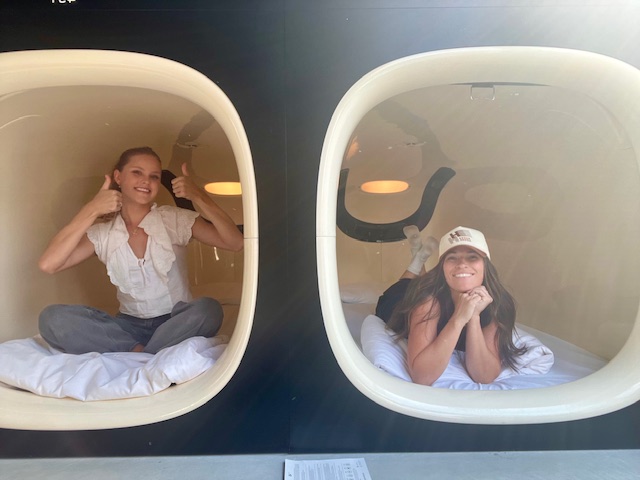
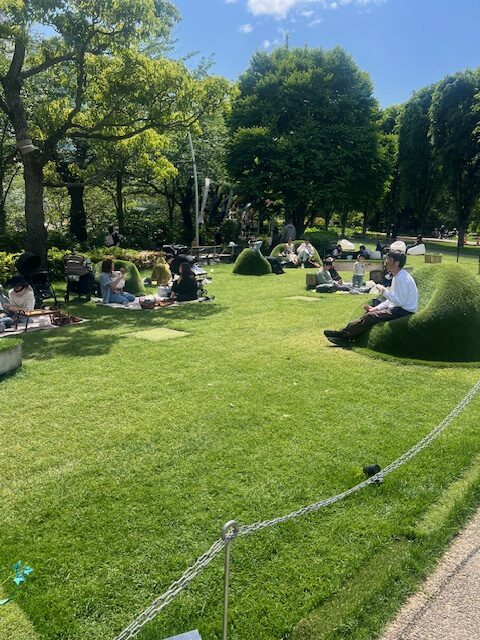

Tokyo also was home to some great examples of biophilic design – a modern vehicle to achieve harmony with nature so highly valued in Japan. I saw skyscrapers that infused greenery in vertical installations and parks full of man-made berms perfectly shaped for a mid-day rest. These green designs were pleasant interruptions of the dense city fabric and proof that traditional values can still resonate in modern design.
I rarely say I would go back to a destination twice. Not because the place didn’t live up to my expectations, but rather because there are so many new places to see and only so much time and resources. Japan is a rare exception. For such a small island, there’s still so much to see and perspective to learn from. It was a trip I needed during what’s been a challenging year. Nothing like leaving the country to bring you back to life.
The bushy bench in Tokyo is mind blowing